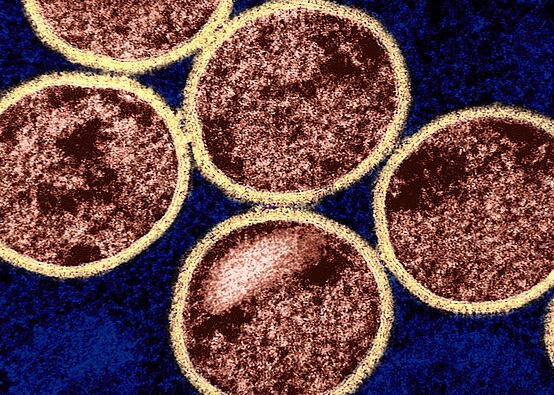
How Disgust Shapes Our Reactions to Mpox: Prevention and Perceptions
In the fight against Mpox, public health campaigns have long relied on powerful imagery to convey the seriousness of the disease. From the disfiguring rashes to the potential consequences of ignoring preventive measures, Mpox prevention efforts often hinge on eliciting emotional responses—disgust being a prominent one. But how exactly does disgust play into our willingness to take preventive action, and could this emotion be doing more harm than good in some cases?
A recent study (will download a pdf) by Xueyan Cao and Nanxiao Zheng sheds light on the intricate relationship between disgust, perceived severity, susceptibility, and the role of stigma in shaping our response to Mpox prevention. Let’s explore their findings and what they mean for public health practitioners and researchers.
The Power of Disgust in Health Campaigns
Emotions are central to decision-making, especially when it comes to health. In the context of Mpox, disgusting visuals—whether of rashes or other symptoms—are used to evoke an emotional response that drives people to action. The idea is simple: if the disease looks revolting, people will want to avoid it and will be more likely to adopt preventive measures.
The study suggests that disgust plays a significant role in raising awareness and motivating prevention behaviors. Among the four categories of disgust examined, the most impactful was disgust directed at the disease itself, compared to disgust toward graphics, information sources, and patients. When people are shown graphic images of Mpox symptoms, they tend to perceive the disease as severe, which in turn increases their intention to take preventive action.

This connection between disgust and prevention is not new. Similar effects were observed in public health campaigns for COVID-19, using fear and disgust to promote mask-wearing and social distancing. However, while disgust can be an effective tool, it isn’t without its challenges.
Perceived Severity: The Key Driver of Preventive Action
While disgust influences both perceived severity and susceptibility to disease, it is the perception of severity that plays a much more prominent role in driving preventive behaviors. When people see horrifying images of Mpox, they tend to believe that the disease could have serious consequences if contracted. This heightened perception of risk makes them more likely to take actions to protect themselves, such as avoiding contact with infected individuals or practicing better hygiene.
Interestingly, while perceived severity was strongly linked to prevention, perceived susceptibility—how likely a person feels they are to get Mpox—had a much weaker connection. People may believe that Mpox is a severe disease, but that doesn’t necessarily mean they think they’re personally at risk. This highlights an important distinction in health communication: it’s not enough to simply make people feel susceptible. To inspire action, they need to understand the serious consequences of the disease.
The Double-Edged Sword of Stigma
While disgust can be a powerful motivator for prevention, it also has a darker side—stigma. The study found that stigma against people with Mpox, particularly those in marginalized communities, can weaken the effectiveness of disgust-based messaging. In the case of Mpox, there has been significant stigma attached to the disease, particularly because it disproportionately affects men who have sex with men (MSM). This stigma can lead to discrimination and social exclusion, which, ironically, may reduce the likelihood that people will take preventive measures.
Stigma works by shifting the focus away from the disease itself to the people affected by it. Instead of motivating preventive behaviors, it causes individuals to view the disease as a problem for “others,” leading them to distance themselves from those who are infected rather than take steps to protect themselves. This distancing can have dangerous consequences, as it undermines the effectiveness of public health campaigns.

For example, people may avoid getting vaccinated or taking other preventive measures because they don’t see themselves as part of the at-risk population. They may also be less likely to seek medical care if they fear being stigmatized or judged. This is why stigma is such a crucial factor in the success of health campaigns—it can either amplify or dampen the impact of disgust.
What Can Public Health Practitioners Do?
The study’s findings underscore the need for careful consideration when designing health communication strategies. Disgust can be a powerful tool, but it must be used wisely to avoid fueling stigma. Public health practitioners should focus on emphasizing the severity of the disease while also being mindful of the social and emotional implications of disgust-based messaging.
- Emphasize Severity, Not Susceptibility: Since perceived severity is a stronger driver of preventive behaviors than perceived susceptibility, public health campaigns should focus on illustrating the serious consequences of Mpox. Instead of simply telling people they’re at risk, show them the impact the disease can have on their lives.
- Avoid Reinforcing Stigma: Public health messaging should be designed to prevent the marginalization of specific groups. This can be achieved by using inclusive language and images that reflect the diversity of those affected by Mpox, rather than focusing solely on MSM communities. Doing so will help reduce the stigma associated with the disease and encourage broader preventive action.
- Use Disgust Carefully: Disgust can be a double-edged sword. Public health campaigns must ensure that while capturing people’s attention with the emotional impact of disgust, they also provide clear, actionable steps for prevention. This includes practical advice on how to avoid the disease, such as vaccination or hygiene practices.
- Tailored Messaging: The role of stigma in dampening preventive behaviors suggests that messaging should be tailored to different audiences. For populations more likely to harbor stigmatizing attitudes, education about the disease and the importance of empathy may be necessary to counteract these effects.
Join the Conversation
What role do you think emotions like disgust should play in public health campaigns? Have you ever seen a campaign that used emotional appeals effectively? Share your thoughts and experiences in the comments below or join the conversation on social media.
Be Part of the Change – Get Weekly Updates!
Stay informed and connected. Subscribe for free and share this blog to make a difference in public health with others. If you liked this blog, please share it! Your referrals help This Week in Public Health reach new readers.



